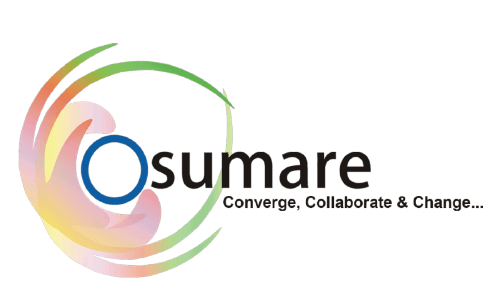Introduction
In the competitive world of SEO, many websites make the critical mistake of assuming that more content always equals more visibility. This belief often leads to a bloated site filled with underperforming or irrelevant pages—commonly known in the digital marketing realm as zombie pages. These aren’t just harmless leftovers; they can quietly drag your search performance down. As businesses work to expand their digital footprint, it’s vital to understand the risks of overpublishing and the need for strategic content pruning. Even the Top digital marketing company in Delhi understands that ranking higher today isn’t about flooding the web with content, but about delivering focused, high-quality experiences that search engines and users both trust.
What Are Zombie Pages?
Zombie pages are essentially webpages that add no real value to users or your site’s SEO efforts. They’re indexed by Google, but generate little or no traffic, offer poor engagement, and often don’t rank for any useful keywords. These pages are “alive” in the technical sense but are functionally dead when it comes to performance.
They often include:
Outdated blog posts with obsolete information
Old service pages or product listings no longer offered
Duplicate or near-identical content targeting similar keywords
Thin content pages (under 300 words)
Tag or archive pages with no unique value
Auto-generated or templated pages that lack originality
The rise of CMS automation and the temptation to scale content rapidly are key reasons why so many websites end up with these digital deadweights.
How Zombie Pages Hurt Your SEO
1. They Dilute Your Site’s Authority
Search engines evaluate your entire domain when determining rankings. If a large percentage of your pages are weak or irrelevant, it reduces the perceived authority of your site. This dilutes the impact of your high-value content and can lead to a general drop in rankings across the board.
2. They Waste Your Crawl Budget
Google allocates a limited “crawl budget” to every site—especially larger ones. If crawlers spend their time navigating through low-value zombie pages, they may miss more important pages, delaying indexing or re-indexing of updated content. Over time, this can impact visibility and freshness in the SERPs.
3. They Confuse Keyword Relevance
Having multiple pages targeting similar topics without strong differentiation can lead to keyword cannibalization, where none of the pages rank well. Zombie pages increase the likelihood of this overlap, weakening your site’s keyword clarity.
4. They Harm User Experience Metrics
Pages that deliver little value tend to have high bounce rates and low dwell time—both negative behavioral signals. When users consistently exit your site from zombie pages, it sends a message to search engines that your site is not satisfying search intent.
5. They Hinder Site Navigation and Structure
A well-structured site helps both users and search engines find what they’re looking for. But zombie pages clutter your sitemap, overcomplicate your internal linking, and create unnecessary depth. This negatively affects crawlability and overall UX.
Read more about Technical SEO
How to Identify Zombie Pages
Identifying zombie pages requires a mix of SEO tools and behavioral analysis:
- Google Analytics / GA4: Spot pages with under 10 sessions in the past 6–12 months.
- Google Search Console: Look for URLs with zero clicks or impressions.
- Screaming Frog / Sitebulb: Find pages with thin content, no backlinks, or orphan status.
- Ahrefs / SEMrush: Filter pages that rank for no keywords and get no external links.
- Heatmaps: Use tools like Hotjar to assess if users interact with your content or drop off immediately.
A comprehensive audit can reveal hundreds of zombie pages even on well-established websites.
What to Do With Zombie Pages
Once you’ve identified the dead weight, there are four main strategies you can implement:
1. Update the Content
If a zombie page was once valuable or ranks low but targets a relevant keyword, consider refreshing it. Add new information, optimize for current search intent, update internal links, and improve formatting.
2. Consolidate Similar Pages
If you have multiple low-performing pages on similar topics, merge them into a single, in-depth resource. Redirect the old URLs to the updated one using a 301 redirect. This builds topical authority while preserving any SEO equity.
3. Remove Irrelevant Pages
Some pages are simply not worth saving. Old event pages, outdated announcements, or discontinued service listings should be deleted and return a 410 (Gone) or 404 status.
4. Noindex or Canonicalize
If a page serves a function but shouldn’t be indexed—like filtered search results or duplicate content—use the “noindex” tag or a canonical tag pointing to the main version.
Best Practices to Prevent Future Zombie Pages
- Audit your content quarterly to ensure it continues to serve user intent
- Set performance benchmarks for every new piece—traffic, engagement, or conversion metrics
- Avoid auto-generating location or service pages unless they offer unique content
- Map content strategy to keyword intent instead of producing for the sake of volume
- Use internal linking strategically so no page is orphaned or disconnected
SEO success today is more about content quality, architecture, and user experience than it is about volume. It’s time we retire the “publish and forget” mindset.
Conclusion
Zombie pages might seem harmless at first, but when left unchecked, they can slowly strangle your site’s performance in search engines. They dilute authority, mislead search engines, and turn away users. Conducting a regular content audit, understanding page value, and pruning what no longer serves your SEO strategy is essential for long-term growth.
Many brands are now shifting from “more content” to “better content,” and this shift is already proving fruitful. Even a Top digital marketing company in Delhi recognizes the power of a streamlined, high-value content ecosystem. To thrive in 2025 and beyond, it’s time to clean house and let your content portfolio reflect your brand’s authority—not its excess.

